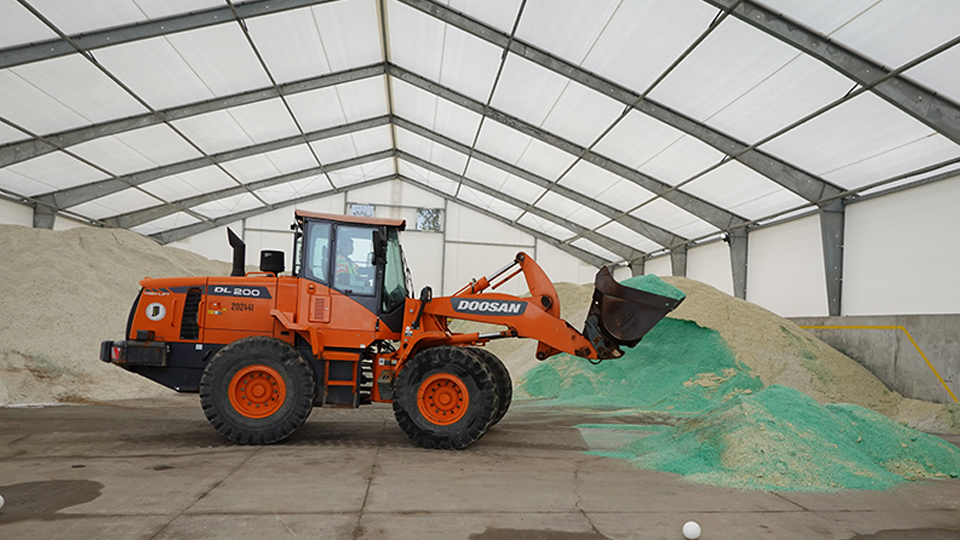Purdue professors develop tech platform that monitors stockpile volumes
Subscriber Benefit
As a subscriber you can listen to articles at work, in the car, or while you work out. Subscribe Now
Two civil engineering professors from Purdue University have developed an automated system that can estimate the volume of stockpiles of bulk supplies, such as salt, used in industrial, highway and agricultural applications. The Indiana Department of Transportation is funding the research through its Joint Transportation Research Program.
Salt monitoring and reporting technology, or SMART, was created by Ayman Habib and Darcy Bullock, professors of civil engineering from Purdue’s Lyles School of Civil Engineering. The university says stockpile management is important in roadway maintenance, which uses salt to deice roads, and government agencies are increasingly interested in tracking stockpiles to assess their environmental impact.
Jeremy McGuffey, statewide winter operations manager for INDOT, says the department has nearly 120 salt storage buildings around the state and most locations visually estimate the volume.
“This is inherently incorrect and will vary from person to person,” McGuffey said. “If I pointed to a pile of stone on the ground, could another person accurately tell me the volume of that stone based on sight alone? There are a few locations that use survey equipment to take measurements based on the exterior size – the height and width – of the stockpile, but those don’t account for depth. Many of our buildings are full of salt year-round, and there is no way to reach the back side of the pile to determine how long it is.”
Purdue says traditional methods of measuring stockpiles use field survey procedures that are time consuming and expose surveying crews to dangerous conditions. LiDAR technology, which stands for light detection and ranging technology, is safer and more reliable, but its performance is limited to well-planned scanning and complex data processing schemes when dealing with large indoor sites.
According to Habib, SMART integrates “consumer-grade sensing modalities of imaging and LiDAR units to acquire stockpile data in fewer than 10 minutes per facility, even in challenging environmental situations.”

“SMART also uses an innovative data-processing strategy that can handle this data for accurate evaluation of stockpile volume as well as provide a visual record of the mapped facility in the form of colorized point clouds,” Habib said.
McGuffey says SMART has already provided positive results to INDOT.
“With the system we developed with Purdue, the empty dimensions of the building are solved for first, and then the salt pile’s volume can be easily calculated. The LiDAR system bounces light off the pile millions of times to collect the information we need to determine the volume,” McGuffey said. “The other huge plus is that this system is mostly automated with the only real human interaction being the initial install and then periodic cleaning.”
Habib and Bullock have applied for a patent from the U.S. Patent and Trademark Office. According to Habib, the next steps for SMART are to package the system to be permanently mounted for automated data collection, and to strengthen its ability to work in storage facilities with domed rooftops.
